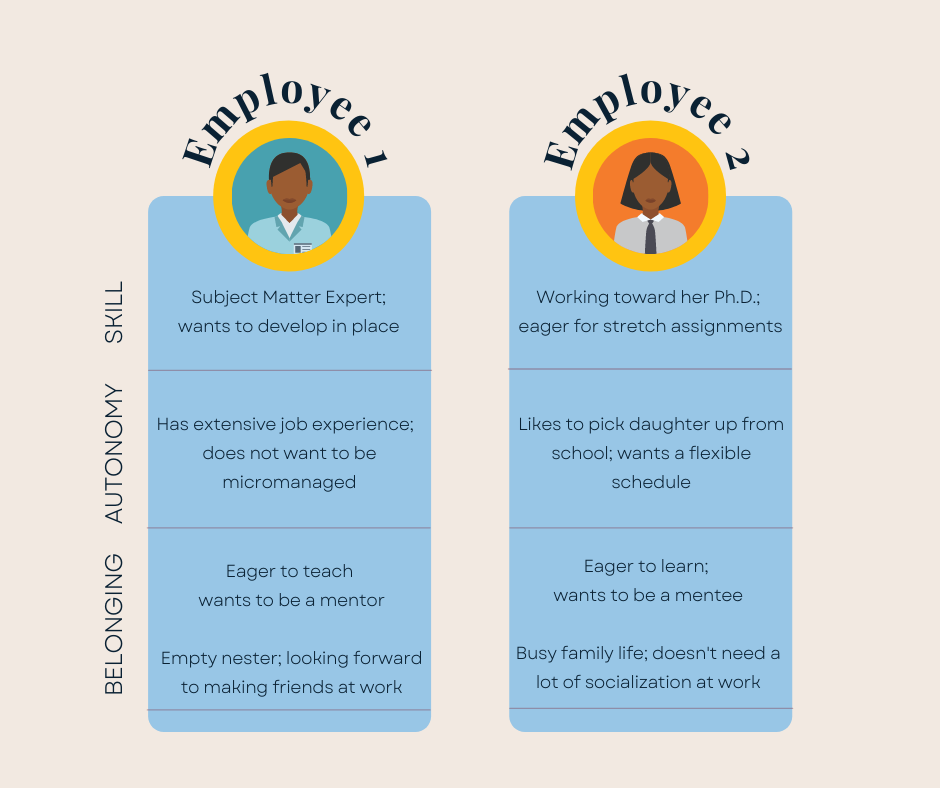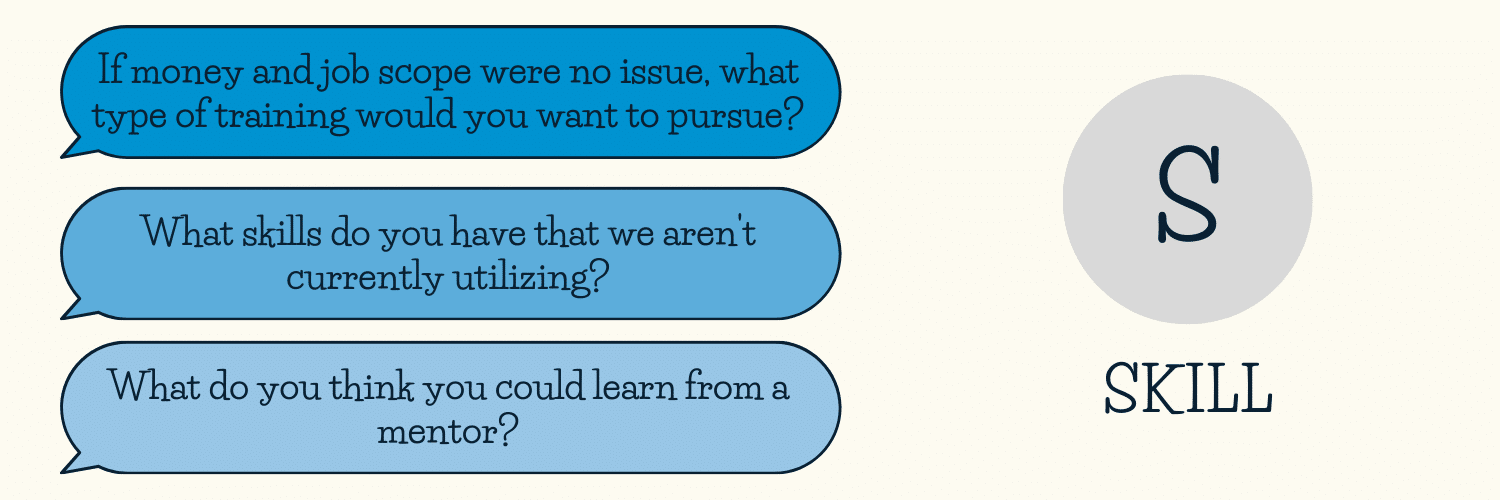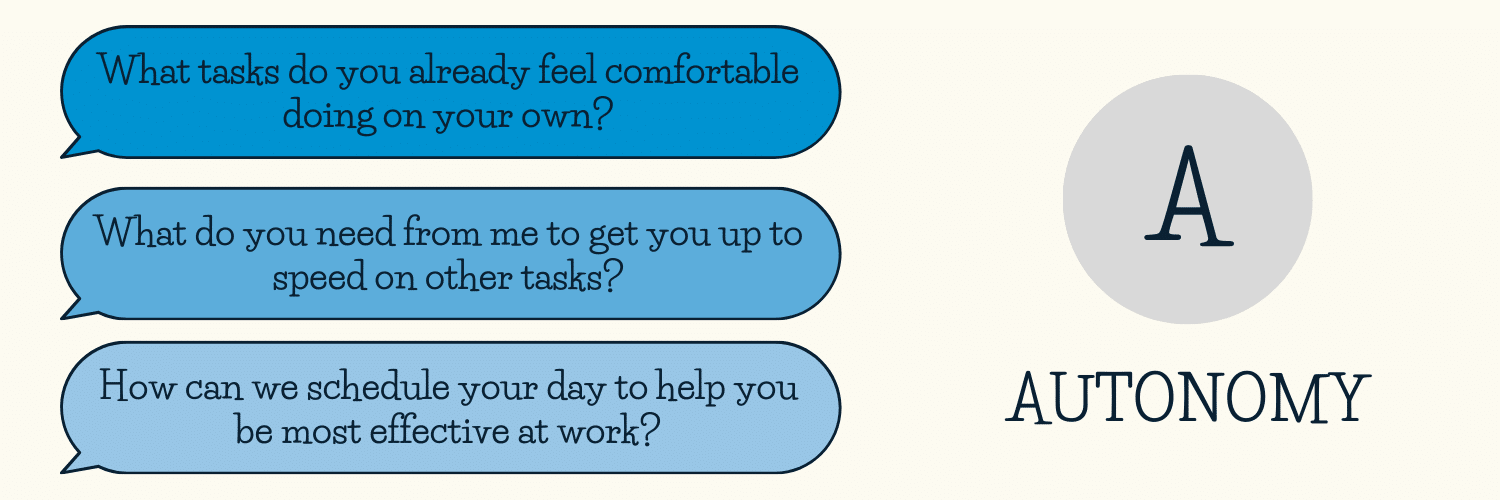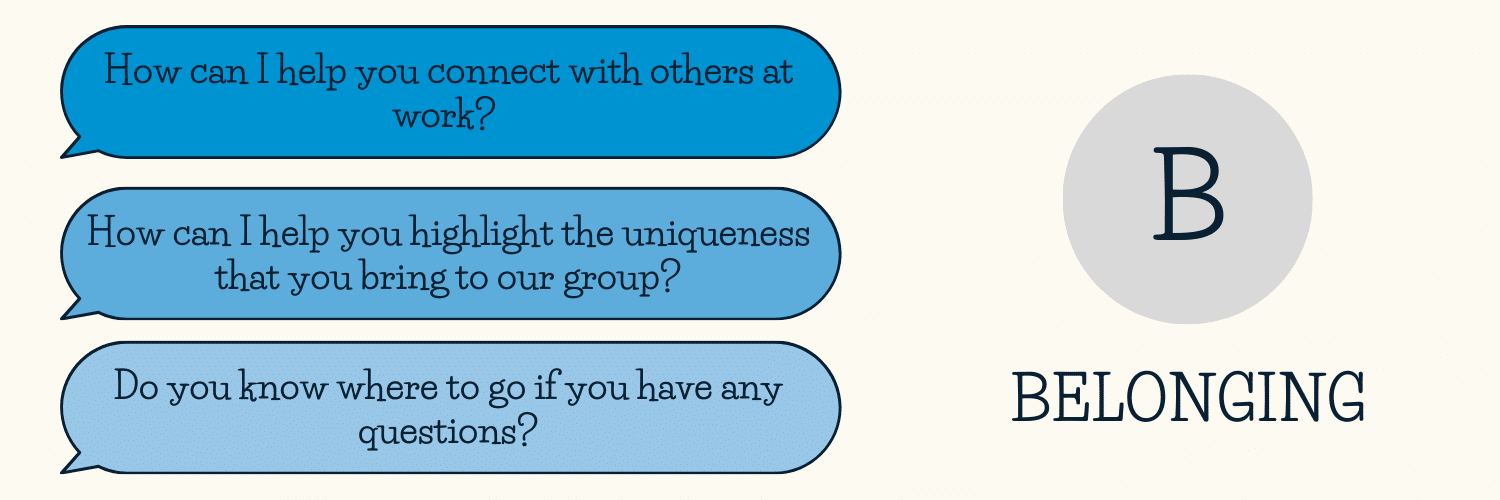Universal (Onboarding) Needs: An Open & Closed Approach
According to the psychological self-determination theory, humans have three basic psychological needs: competency, autonomy, and relatedness. In other words, we want to be skilled, we want to be independent, and we want to belong. Through fulfilling these three basic needs, we experience motivation. Applying this to work, providing opportunities for employees to display and develop skills, to exercise appropriate freedom, and to create beneficial connections at work should translate into high motivation. This theory has held true across a variety of different subgroup populations – to the point where the theory is colloquially referred to as the universal needs (Deci, 2014).
Now let’s introduce another psychological theory: the false-consensus effect. This cognitive bias causes us to assume that others are inherently similar to us. Put differently, it is the tendency to believe that others share the same needs, beliefs, and experiences that we have (Ross et al., 1977). So, while it is true that, at their highest level, these three “universal needs” are common to all people, a common fallacy is to extend this sameness to how these three needs show up in practice.
For example, compare the two sample employees in the graphic below. Both are motivated by each of the three basic needs – but in different ways. Employee 1 has extensive job experience and may be toward the end of his career. He wants to be seen as a mentor and a subject matter expert on the team and may look toward work as a place where he can socialize. He may be fine with a 9-5 schedule, but he does not want to be micromanaged at work. Compare this to Employee 2 – she is working toward her Ph.D. and is eager to have stretch assignments that will challenge her to learn new things. She is looking for a lot of guidance and mentorship at work, but needs work to be flexible to accommodate for her family. She may like collaborating with others, but may not need as much socialization outside of work.

Both employees are motivated by skill, autonomy, and belonging – but these needs show up in different ways. Onboarding is the ideal time to start proactively understanding these individual differences in your new employees.
So what does this have to do with Black History Month?
When it comes to onboarding, an overrepresentation of White employees at the managerial level (McKinsey, 2021) can lead to an unconscious bias in onboarding that skews toward meeting the needs of other White employees. The Black Experience at work is unique – and thus needs and motivations for Black employees may be different than what is expected by their White managers.
Along the same lines – assuming that each Black employee shares the same needs as their Black peers can also minimize the uniqueness that each employee brings to the table. Not every Black team member will want or need the same things as the next does.
Actively combating this bias and creating an onboarding system that effectively integrates and supports Black employees in their first few weeks of employment can help prevent costly turnover down the road – addressing the first of the two “broken rungs.”
One way that we can create an onboarding process that works for a variety of employees is by using an opened and closed approach. In some ways, onboarding should be open, to allow employees to craft their experience around what is uniquely motivating to them. In other ways, closed consistency can help combat bias by ensuring each employee is checking essential boxes.
See below for examples of closed and opened best practices that help ensure that each employee is getting their three universal needs met – in a way that is aligned to their own personal experience. Use the accompanying discovery questions to help kickstart conversations to create a truly customized yet consistent onboarding practice.
SKILL

Closed: Mentorship Program
Having access to higher levels of the organization and being mentored is a key way to build skill in an organization. However, only 31% of Black employees have access to senior leaders at work, as compared to 44% of their White peers (Center for Talent Innovation, 2020). Consider establishing a formal mentorship program as part of your onboarding process to ensure access to senior leadership for all employees.
Open: Custom Development Plans & Job Crafting
Black employees are 3.6 times more likely to be considering entrepreneurship, as compared to their White peers (Center for Talent Innovation, 2020). While some of these employees may not want to further build their technical expertise, they may want skill building opportunities in areas such as sales or customer relations. Consider allowing employees to tailor their development plans with their manager to focus on skills that are mutually beneficial for the employee and the team. In addition, stay open to novel opportunities to utilize skills that exist outside the typical scope! Stretch assignments can lead to creative and unforeseen future opportunities.
AUTONOMY

Closed: Scheduled Check-Ins
32% of Black male professionals feel that their supervisors engage in micromanagement (i.e., managing with excessive control and attention to detail), as compared to only 17% of their white male peers (Essence, 2021). Creating a scheduled check-in timeline for all employees during onboarding can help ensure that each employee is being given the same amount of autonomy – and injecting structure can help the onboarding process stay on track.
Open: Flexible Flexibility
Many organizations are listening to employees and offering flexible work options. While it is of course impossible to please everyone, being open to different types of “flexibility” can help employees design a work schedule that fits their needs. For example – consider those who take public transportation to work. Non-white employees make up 62.4% of public transportation commuters (American Community Survey Reports, 2020), and with transportation schedules designed around the typical workday, they may not see the benefit of having a work schedule where they can “pop in and out of the office.” Additional vacation days or a 4-day work week may be more motivating to those employees than a flexible work schedule.
BELONGING

Closed: Culture of Psychological Safety – and Accountability
Black employees are almost four times as likely to experience prejudice at work as compared to their White colleagues (Center for Talent Innovation, 2020). Building a culture that emphasizes inclusion and belonging is critical to help Black employees feel safe being their authentic selves at work. Interventions in this area include formal training and clear policy communication, as well as immediate accountability for all harassment behaviors.
Open: Being “Authentically Black” at Work
Black employees are often socially pressured to act a certain way at work. Initially, this pressure primarily consisted of Black employees feeling they needed to fit into the “White Box” of professionalism. Now, while the rise of DE&I is certainly welcome, for some Black employees the focus on their Blackness at work has intensified while barriers to true authenticity have been left in place. This dual pressure can be overwhelming, particularly for those in the younger generation. 25% of Black Millennial employees feel they are expected to be a representative for the entire Black experience for their workgroup, while 31% feel they have to expend a great deal of energy to be authentic at work (Center for Talent Innovation, 2020). Not only do these young Black employees feel the pressure of representing their entire demographic, but they also face the challenge of doing so in a way that still conforms to biased standards of professionalism.
While creating space is important, authentic and natural Blackness exists in spaces free of barriers and expectations. The diversity of the Black Experience contributes to its beauty, and it is to be reinforced that there is no wrong way to be Black at work.
